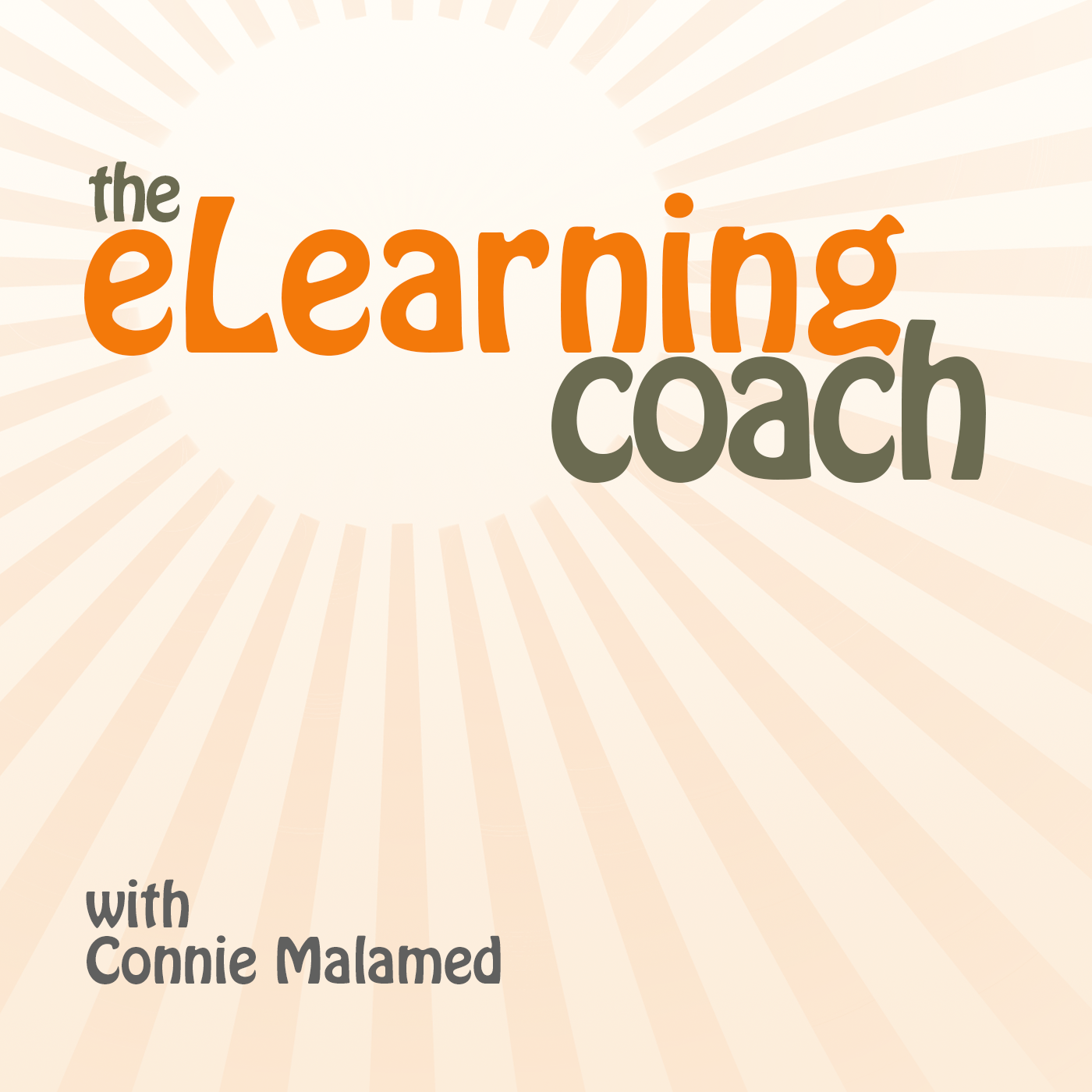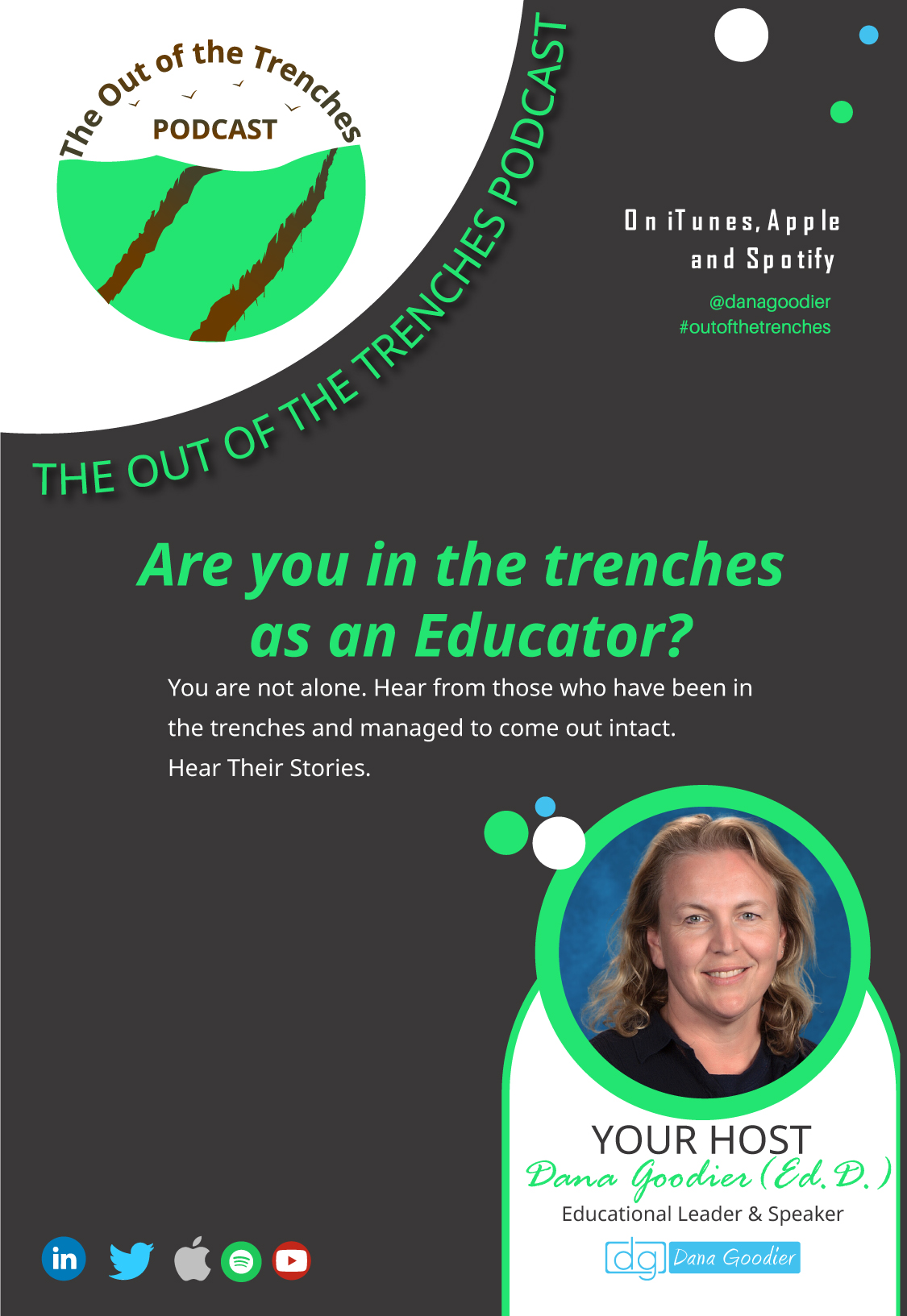
Designing with Love
Hosted by Grand Canyon University (GCU) adjunct instructor and professional instructional designer Jackie Pelegrin, this podcast explores instructional design, e-learning, and how to incorporate AI technology into different aspects of your work. Tune in for expert tips, real-world insights, and inspiring stories from students, alumni, and leaders in the field.
Designing with Love
Mastering the ARCS Model for Adult Learning
Ever designed a learning experience that simply didn't connect with your audience? The missing ingredient might be motivation—the essential element that transforms passive content consumption into active, engaged learning.
In this comprehensive exploration of John Keller's ARCS model, I break down the four pillars that create truly motivational learning experiences for adults: Attention, Relevance, Confidence, and Satisfaction. Developed in the early 1980s, this powerful framework addresses the unique challenges adult learners face, from competing priorities to engagement gaps and motivation issues.
Whether you're an instructional designer, educator, or learning professional, this episode offers valuable insights to elevate your approach to adult learning. As Benjamin Franklin wisely noted, "Tell me and I forget. Teach me and I remember. Involve me and I learn." The ARCS model gives us the framework to create that involvement.
Ready to transform your approach to instructional design? Check out the additional resources in the show notes and share your experiences applying the ARCS model to your learning projects!
🔗 Episode Links:
Please check out the resource mentioned in the episode. Enjoy!
📑 References:
OpenAI. (2025). ChatGPT (Aug 8 version) [Large language model]. https://chat.openai.com/chat
Join PodMatch!Use the link to join PodMatch, a place for hosts and guests to connect.
Disclaimer: This post contains affiliate links. If you make a purchase, I may receive a commission at no extra cost to you.
💟 Designing with Love + allows you to support the show by keeping the mic on and the ideas flowing. Click on the link above to provide your support.
☕ Buy Me a Coffee is another way you can support the show, either as a one-time gift or through a monthly subscription.
🗣️ Want to be a guest on Designing with Love? Send Jackie Pelegrin a message on PodMatch, here: Be a guest on the show
🌐 Check out the show's website here: Designing with Love
📱 Send a text to the show by clicking the Send Jackie a Text link above.
👍🏼 Please make sure to like and share this episode with others. Here's to great learning!
Hello and welcome to the Designing with Love podcast. I am your host, jackie Pellegrin, where my goal is to bring you information, tips and tricks as an instructional designer. Hello, gcu students, alumni and fellow educators, welcome to episode 42 of the Designing with Love podcast. In this episode, I will cover how you can leverage the ARCS model when designing adult learning experiences. Before we dive into the ARCS model, here's a question to think about. Have you ever designed a learning experience that didn't quite click with your audience? If your answer to this question is yes, then stay tuned to learn more about how you can leverage the ARCS model to create meaningful learning experiences. The ARCS model was developed by John Keller in the early 1980s, with its first formal introduction in 1983. All right, so now that you know who developed the model, let's take a few minutes to define the model and why it is best suited for adult learners.
Speaker 1:The ARCS acronym represents a specific area that is important to adult education. Here's a breakdown of the acronym A is for attention Capture and sustain the learner's interest. Some ways to achieve this are to use surprising facts, thought-provoking questions, stories or multimedia to spark curiosity and keep learners engaged. R is for relevance Connect the learning to the learner's goals, experiences or real-world needs. Some ways to achieve this are to show how the content applies to their job, personal growth or previous knowledge to make the learning feel meaningful. C is for confidence Help learners believe they can succeed. Some ways to achieve this are to set clear objectives, provide supportive feedback and offer achievable challenges to build self-efficacy and reduce anxiety. S is for satisfaction Ensure learners feel a sense of accomplishment. Some ways to achieve this are to reinforce progress with recognition, rewards or real-world application to make the learning experience rewarding and worthwhile. This model is well-suited for adult learners because it aligns closely with the core principles of adult learning theory and addresses the challenges adults often face. Great. So now that you have a solid understanding of the ARCS model, I will briefly discuss why motivation matters in adult learning. As I mentioned in episode 41 titled Light the Fire, don't Fill the Pail Adult Learning Secrets.
Speaker 1:Adult learning theory refers to a framework of principles and models that explain how adults learn differently from children. This theory emphasizes practical application and drawing on life experiences. Some common challenges that can occur are competing priorities, lack of engagement and motivation gaps. Some ways to address these challenges are to involve learners in the content creation process, make the learning meaningful to their personal and professional life, engage learners throughout the learning experience and provide fun and interactive opportunities to break up the content. All right, so, now that you have a solid framework for why motivation matters in adult learning, let's take a deep dive into the ARCS components with some practical tips.
Speaker 1:Attention the two different types that relate to attention are perceptual arousal, which comprises of surprise and curiosity, and inquiry arousal, which comprises of questions and problems. Several strategies you can incorporate are storytelling, humor and interactive media. Some examples of these strategies are to share a personal story with your learners, share a lighthearted joke or include some interactive media that relates to the content. Relevance One specific way to incorporate relevance is by aligning content with learners' goals, job roles and prior knowledge. Several strategies you can incorporate are relatable case studies, personal goal setting and real-world examples. Some examples of these strategies are to tie in adult learning principles such as self-directedness or experience-based learning. You can learn more about some specific examples of these principles that I covered in episode 41.
Speaker 1:Confidence One specific way to incorporate confidence is by setting clear learning objectives and scaffolded success. Several strategies you can incorporate are practice opportunities, feedback and incremental challenges. Some examples of these strategies are to address imposter syndrome or fear of failure in adult learners by letting them know they're making great progress along the way and that if they don't get something right the first time, they can try again. Satisfaction One specific way to incorporate satisfaction is by making learning rewarding, both intrinsically and extrinsically. Several strategies you can incorporate are badges, praise and applied success is to make sure to end the experience on a high note by incorporating elements such as an inspiring quote or call to action that will make the experience memorable Great.
Speaker 1:So now that I have provided you with some practical tips that you can apply with one of your current or next projects, I will briefly review some key benefits of using the ARCS model in instructional design. Key benefits of using the ARCS model in instructional design Benefit number one increases learner engagement and motivation. Why this matters Learners want to feel like their time is not wasted when completing courses, which is why engagement and motivation is vital to the success of any course. Benefit number two leads to better knowledge retention and application. Benefit number two leads to better knowledge retention and application. Why this matters as instructional designers, we want our courses to not simply engage learners and provide information in the moment, but we want the content to be applied on the job or in a real life situation. Benefit number three creates more learner-centered, empathetic design. Why this matters when creating courses for learners, you don't want to center the learning on what the instructor or facilitator wants. Instead, it's important to develop learning experience that are learner-centered and empathetic to what the learners need and want out of the experience.
Speaker 1:Benefit number four reduces dropout rates in online and workplace learning programs. Number four reduces dropout rates in online and workplace learning programs. Why this matters. The last thing you want is to spend time and energy to create a course and then have it sit on a shelf and not go anywhere or have high dropout rates. All right. So now that I have provided you with several benefits of using the ARCS model in instructional design, I will take a few minutes to give you a practical example of how you can incorporate the model into designing a leadership skills course for a company. Here's the scenario you currently work as an instructional designer at a Fortune 500 company. The learning and development department has asked you to design a leadership skills e-learning module for the employees at the company. The course will be made available in the online course catalog for current and aspiring leaders to enroll in and complete in an asynchronous format. Now I will break down each of the elements of the model by providing a specific goal application steps and why it matters.
Speaker 1:Attention what's the goal steps and why it matters? Attention what's the goal? Capture the learner's interest from the start. Here's the application steps. Number one open the course with a short, dramatic video of a real-life leadership crisis, such as an urgent workplace conflict. Number two follow it up with a provocative question such as what would you do in this situation? Why this matters this creates curiosity and a desire to engage with the material Relevance. What's the goal? Make the content personally meaningful. Here's the application steps.
Speaker 1:Number one allow learners to choose a leadership path based on the field or position. Number two include case studies and examples that mirror the challenges they face in their roles. Number three have them reflect on their own leadership styles and apply concepts directly to their workplace. Why this matters Adults see the immediate value in connection to their professional goals. Confidence what's the goal? Help learners believe they can succeed. Here's the application steps. Provide clear learning objectives and a preview of the skills they will master. Number two use interactive scenarios with guided feedback to let them practice decision-making in low-risk environments. Number three include progress bars, checkpoints and self-assessments throughout the course. Why this matters this scaffolding boosts learner confidence and reduces anxiety. Satisfaction what's the goal? Make learning rewarding and fulfilling. Here's the application steps.
Speaker 1:Number one end each module with a real-world challenge they can solve with what they've learned. Number two provide digital badges or a certificate they can display on LinkedIn. Two provide digital badges or a certificate they can display on LinkedIn. Number three invite learners to reflect on their growth and share wins in a course discussion or a Slack group. Why this matters Learners feel a sense of achievement and ownership over their development. So, after sharing this scenario with you, reflect on the following what elements will ensure this e-learning module is engaging and effective? Great.
Speaker 1:So now that you have a practical example of how the ARCS model can be applied when developing an e-learning module, I will share three tips for implementing the model for your next project. Tip number one start by mapping ARCS to your learning objectives. To do this, you can take a look at the learning objectives you have developed to see how you can align them to components of the model. Tip number two collaborate with SMEs to bring relevance in real-world context. The best way to be successful with this is to ask your SMEs throughout the process how the content can bring relevance in real-world context to the learners in meaningful ways. Tip number three evaluate learner feedback through the lens of ARCS. To do this, build the components of the model into your learner feedback mechanisms, such as surveys and interviews. I hope you have found this information about how to leverage the ARCS model to elevate adult learning helpful as you design and develop learning experiences for adult learners.
Speaker 1:As a recap, this episode covered what the ARCS model is, why motivation matters in adult learning, practical tips, benefits of using the model in instructional design and some quick tips for implementing the model in your next project. I would encourage you to review your current or upcoming projects that you are designing for adult learners with the ARCS lens in mind. Please share your feedback or stories of using the ARCS model by sending me a text message. You are welcome to review the resource I created at the link provided in the show notes, which includes an overview of what was covered in the episode. In addition, please check out my blog site, which is also provided in the show notes.
Speaker 1:As I conclude this episode, here's an inspiring quote from Benjamin Franklin "'Tell me and I forget. "'teach me and I remember. "'involve me and I forget. Teach me and I remember. Involve me and I learn. Yay, thank you for taking some time to listen to this podcast episode today. Your support means the world to me. If you'd like to help keep the podcast going, you can share it with a friend or colleague, leave a heartfelt review or offer a monetary contribution. Every act of support, big or small, makes a difference and I'm truly thankful for you.
Podcasts we love
Check out these other fine podcasts recommended by us, not an algorithm.

Buzzcast
Buzzsprout
Podcasting Made Simple
Alex Sanfilippo, PodMatch.com
The eLearning Coach Podcast
Connie Malamed: Helps people build stand-out careers in learning design.
Dear Instructional Designer
Kristin Anthony
The Visual Lounge
TechSmith Corporation
Wake Up the Lions!
Rory Paquette
Seven Mile Chats
Julia Strukely
Revelations with Cole Johnson
Cole Johnson
The Way I Heard It with Mike Rowe
The Way I Heard It with Mike Rowe
The KAJ Masterclass LIVE
Khudania Ajay
Book 101 Review
Daniel Lucas
LOVE Letters
Daniel Lucas
Mental Health 101
Daniel Lucas/G.Mick Smith
Movie 101 Review
Daniel Lucas And Bob LeMent
Abstract Essay
Daniel Lucas /Sal Cosenza
The Talking Silkworm Podcast
Talking Silkworm
Daniel Bernabe. Daily Inspirational Quotes.
Daniel Bernabe
Relatable Wisdom
Wisdom
My Podcast Story
Wisdom
The Out of the Trenches Podcast
outofthetrenches
Conversations with Rich Bennett
Rich Bennett
The WallBuilders Show
Tim Barton, David Barton & Rick Green

